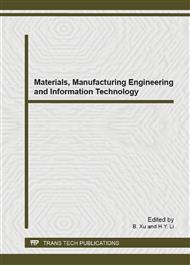p.7
p.11
p.15
p.19
p.23
p.27
p.31
p.35
p.40
Preparation and Properties of Porous Hydroxyapatite Ceramics by Three Dimensional Stacking with Homogeneous Fibers
Abstract:
A new technique to prepare macroporous hydroxyapatite (HA) scaffolds was introduced. Porous HA ceramics were prepared by sol-gel method from chitin dissolved in dimethylacetylamide (DMAc) / lithium chloride (LiCl) solvent, three dimensional stacking with HA gel fibers and pore agent. The blocks dried were heated to optimum sintering temperature of 1280°C. The porous HA ceramics reinforced by homogeneous fibers, with interconnected pores and high porosity and pore-diameter were obtained, whilst improving mechanical strength. Sintered ceramics were characterized by X-ray diffraction (XRD) and scanning electron microscopy (SEM). XRD analysis confirmed that the crystal structure remained HA. SEM showed the samples presented a highly interconnected porous reticulate structure with average pore size ranging from 340μm to 450μm. The porosity was varied from 61% to 83%. The maximum compressive strength of HA ceramic was 3.4MPa.The mechanical strength of samples was improved with addition of homogeneous fibers.
Info:
Periodical:
Pages:
23-26
Citation:
Online since:
March 2014
Authors:
Price:
Сopyright:
© 2014 Trans Tech Publications Ltd. All Rights Reserved
Share:
Citation:


